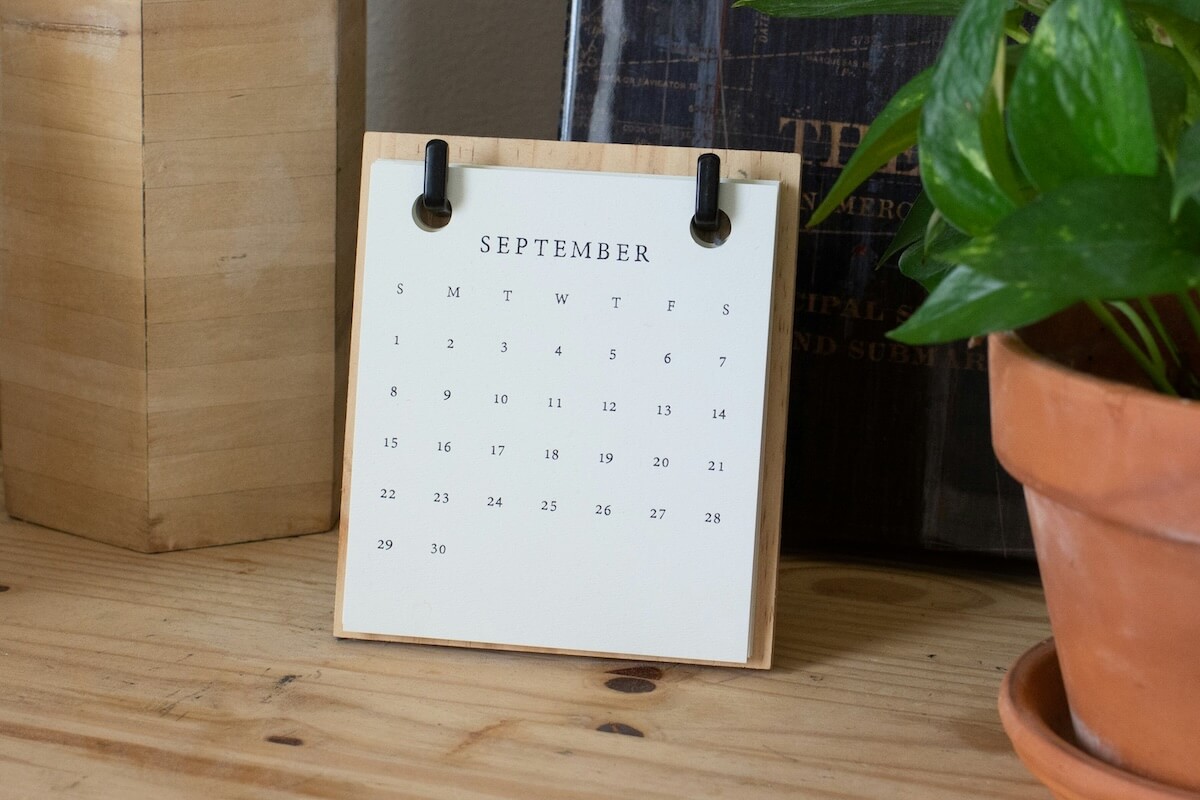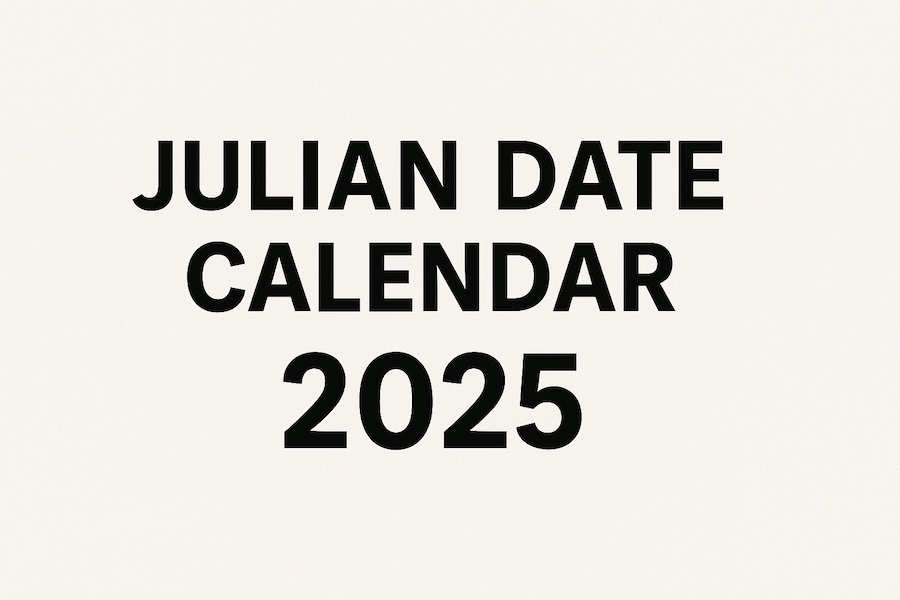What is Today’s Julian Date?
Day ... of 2025
Different Julian Date Formats
1. Ordinal Date (Day of Year)
Also known as: Julian Date in everyday use
The most common Julian date format simply counts the day of the year from 1 to 365 (or 366 in leap years).
- January 1 = Day 1
- December 31 = Day 365 (or 366)
Uses:
- Manufacturing and packaging (production dates)
- Agriculture (planting schedules)
- Military operations
- Logistics and inventory management
2. Astronomical Julian Date (JD)
Current Astronomical Julian Date: …
The Astronomical Julian Date is a continuous count of days since January 1, 4713 BC (Julian calendar). It’s used by astronomers to track celestial events across long time periods.
Key Facts:
- Starts at noon UTC
- No months or years to complicate calculations
- Widely used in astronomy and space science
- Reference epoch: January 1, 4713 BC, noon UTC
Uses:
- Astronomical calculations
- Satellite orbital mechanics
- Eclipse predictions
- Historical astronomy research
3. Modified Julian Date (MJD)
Current Modified Julian Date: …
The Modified Julian Date is the Astronomical Julian Date minus 2,400,000.5. This creates smaller, more manageable numbers and shifts the start of the day to midnight instead of noon.
Formula: MJD = JD - 2,400,000.5
Key Facts:
- Starts at midnight UTC (unlike JD which starts at noon)
- Smaller numbers are easier to work with
- Introduced in 1957
Uses:
- Space operations
- GPS and satellite systems
- Aviation and navigation
- Scientific computing
Why Use Julian Dates?
Julian dates are particularly useful because they:
- Eliminate confusion - No ambiguity with month/day formats (MM/DD vs DD/MM)
- Simplify calculations - Easy to calculate days between dates
- Reduce errors - Single number instead of multiple date components
- Universal standard - Understood across different systems and countries
- Continuous timeline - No gaps or irregular month lengths
Converting Between Formats
From Julian Day Number to Calendar Date
If today is day 8 of 2025:
- January has 31 days, so day 8 = January 8
From Calendar Date to Julian Day Number
To find the Julian day number:
- Count days in completed months
- Add the current day of the month
Example for March 15:
- January: 31 days
- February: 28 days (29 in leap year)
- March: 15 days
- Total: 74 (or 75 in leap year)
Quick Reference Table
| Month | First Day | Last Day | Days in Month |
|---|---|---|---|
| January | 1 | 31 | 31 |
| February | 32 | 59* | 28 (29*) |
| March | 60* | 90* | 31 |
| April | 91* | 120* | 30 |
| May | 121* | 151* | 31 |
| June | 152* | 181* | 30 |
| July | 182* | 212* | 31 |
| August | 213* | 243* | 31 |
| September | 244* | 273* | 30 |
| October | 274* | 304* | 31 |
| November | 305* | 334* | 30 |
| December | 335* | 365* | 31 |
*Add 1 after February in leap years
Track Julian Dates Every Day
Want to keep track of Julian dates easily? Download our Julian Date Calendar app to see today’s Julian date, plan ahead, and convert between different date formats.
Related Topics:
- Julian Date Calendar 2024
- Time conversion tools
- Astronomical date systems



